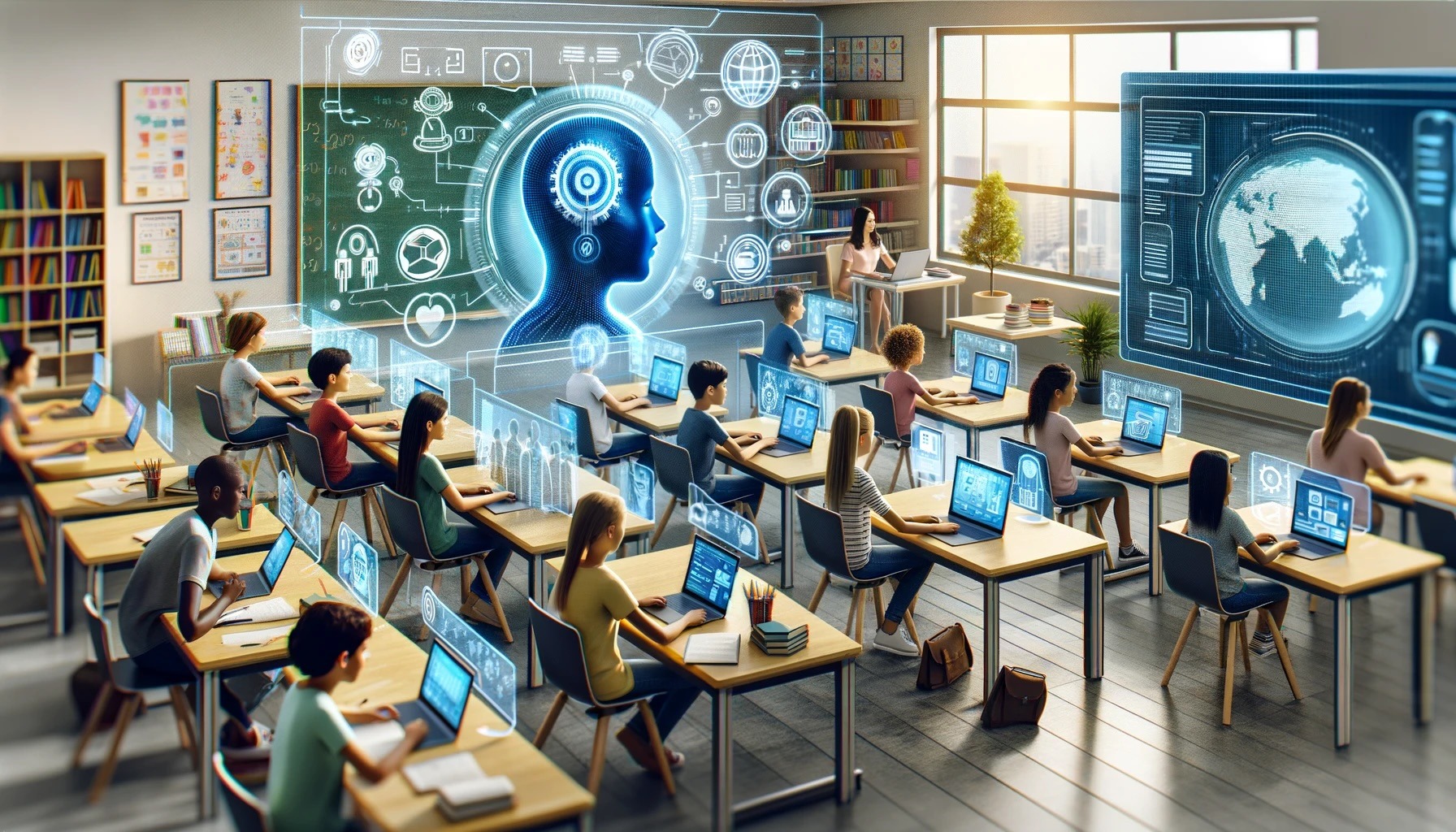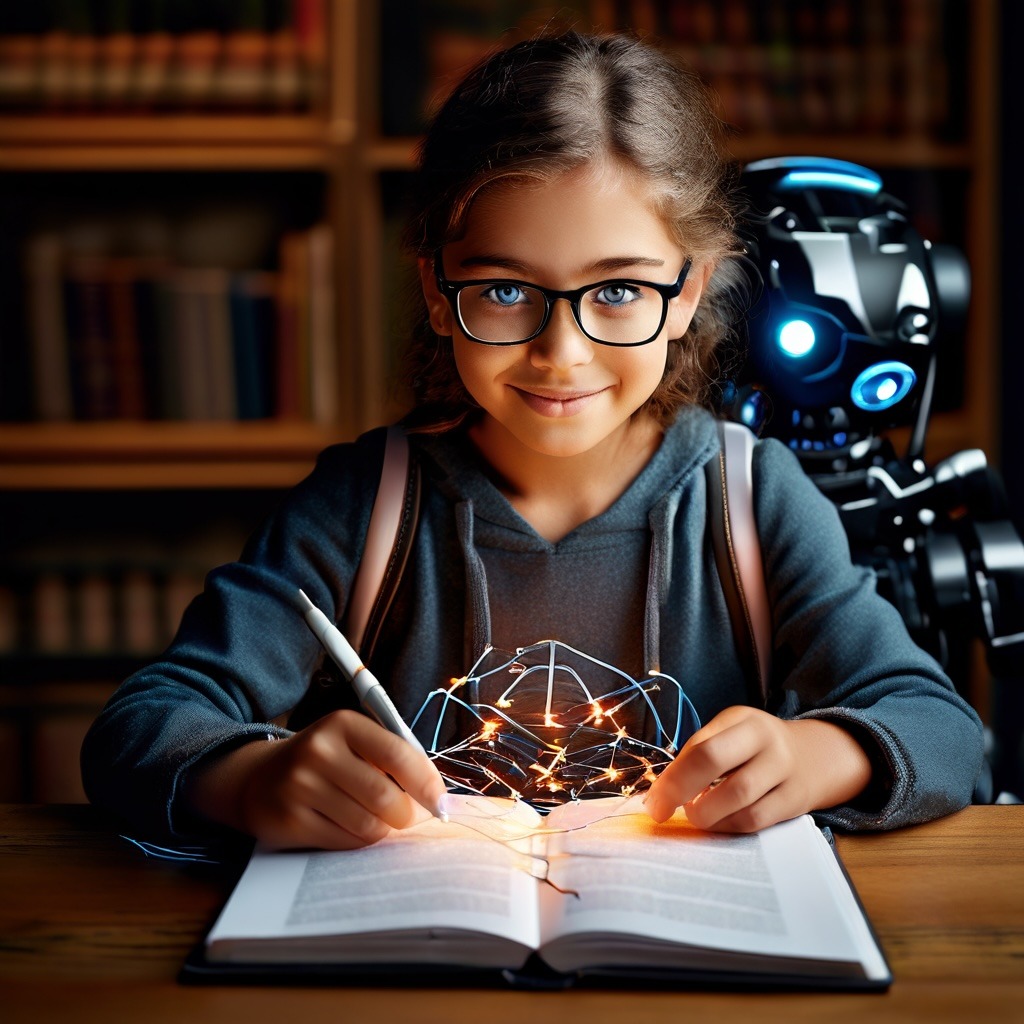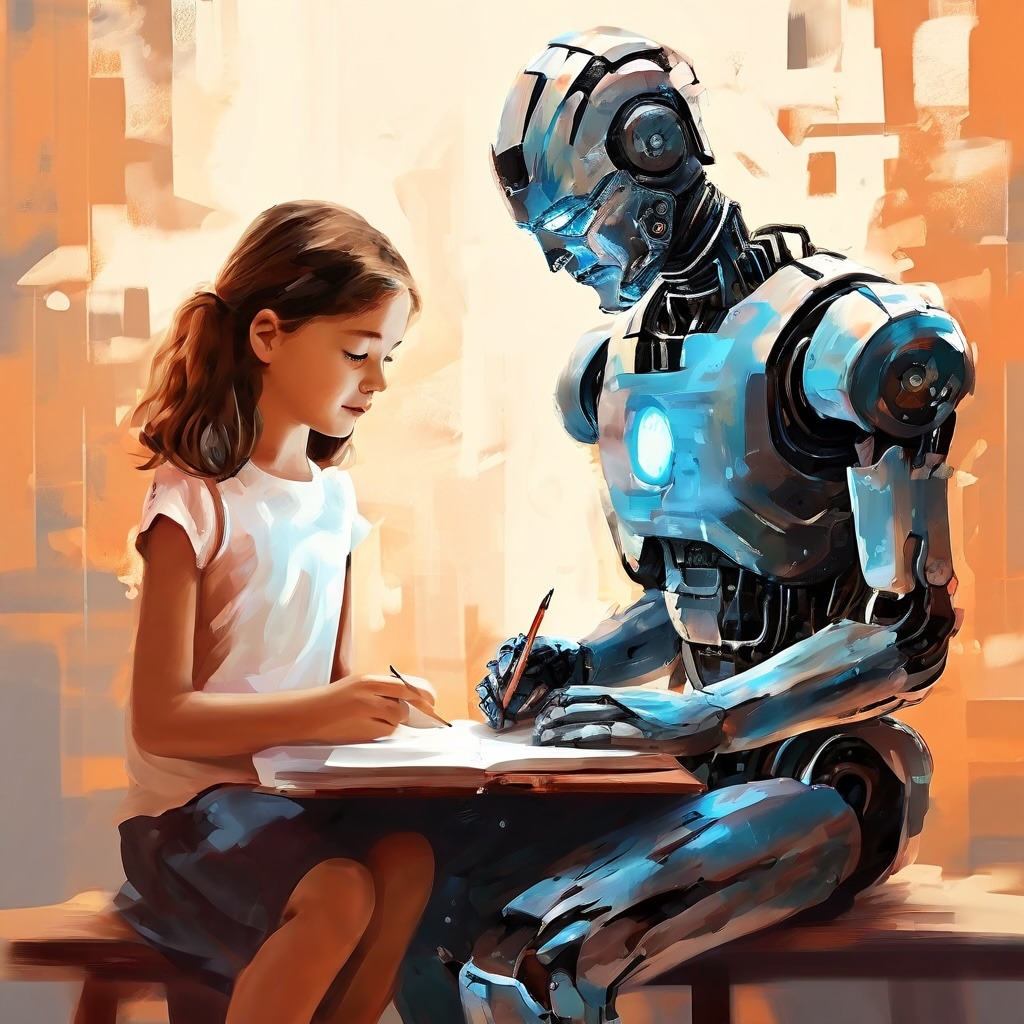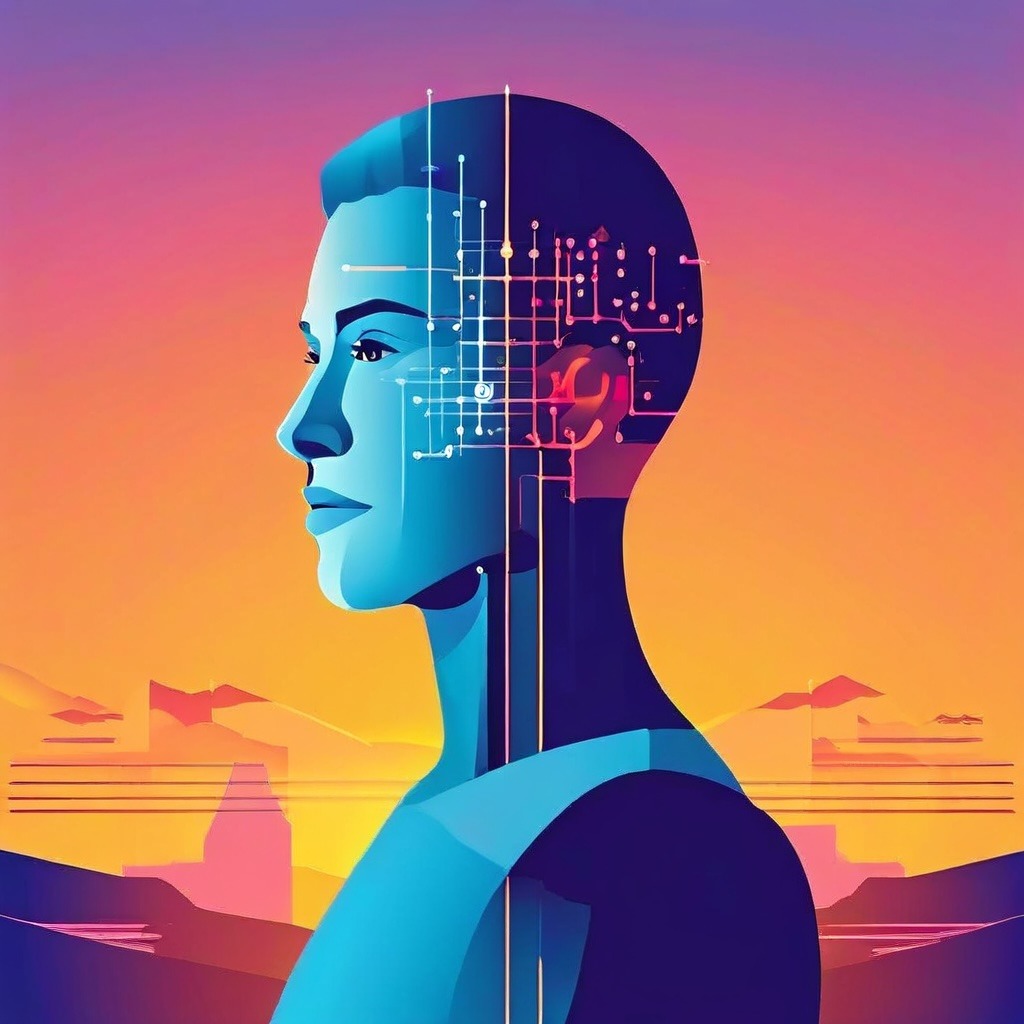Intelligent Tutoring Systems for Personalized Learning
Students often need extra support in specific subjects, but teachers can’t always provide one-on-one attention. AI tutors (also called intelligent tutoring systems) offer a powerful solution. These AI-powered platforms provide personalized learning at scale, helping students master complex concepts and build confidence.
Key features and benefits of intelligent tutoring systems include:
- Personalized instruction: ITSs can assess a student’s current knowledge level, learning style, and pace, and tailor the instructional content and approach accordingly. This allows students to progress at their own speed and receive targeted support where needed.
- Immediate feedback and assessment: ITSs can provide real-time feedback on student responses, helping to identify and correct misconceptions or errors quickly. This timely feedback is crucial for effective learning.
- Adaptivity: As students interact with the system, ITSs can continuously update their model of the student’s knowledge and skills, and adapt the difficulty level, hints, and explanations provided. This dynamic adaptation keeps students challenged but not overwhelmed.
- Accessibility and scalability: ITSs can be accessed anytime, anywhere, providing flexibility and convenience for learners. They can also be cost-effective, as they don’t require the constant presence of a human tutor. By providing personalized tutoring at scale, ITS can help bridge educational gaps in under-resourced areas or in subjects where qualified human tutors are scarce.
- Data Analytics ITSs can log detailed data on student interactions, performance, and progress. This data can be used to further refine the system, inform instructional design, and provide insights to teachers and learners.
- Natural Language Processing: Many ITSs incorporate natural language processing (NLP) to understand and respond to student inputs conversationally, making the learning experience more interactive and engaging.
- Simulation and Visualization: In fields like mathematics, science, and engineering, ITS can offer simulated environments or visualizations that allow learners to experiment and learn through discovery.
Example
A chemistry class uses an AI-powered tutor for balancing chemical equations. The tutor starts with simple examples, providing visual representations and feedback as the student practices. If a student keeps making the same type of mistake, the tutor explains the underlying rule in a different way. For students who excel, it offers increasingly complex equations as a challenge.
Considerations
- The Human Element: AI tutors shouldn’t entirely replace teacher-student interaction. Their greatest power lies in supplementing your instruction, not substituting it.
- Encouraging Growth Mindset: Emphasize to students that the tutor is a tool for practice and learning, not just getting the right answer. Celebrate effort and the willingness to try different problem-solving approaches.
- Monitoring for Gaps: Keep an eye on student usage of AI tutors. A student who avoids using the tool might be struggling and need additional support.
Let’s Shift the Narrative
Instead of seeing AI tutors as competition, think of them as an extension of your teaching toolkit. They help students practice foundational skills, freeing you to nurture critical thinking, problem-solving, and the application of knowledge in creative ways.
What can it look like
Meet Alex, a student who generally enjoys science but has always found the intricate formulas of physics daunting. The class moves at a decent pace, and while he pays attention, some of the core concepts seem just out of grasp. He feels embarrassed to raise his hand and ask for the same explanation again.
- Enter the AI Tutor: Mr. Evans, his physics teacher, integrates an AI-powered tutoring platform into the class. Students can use it for homework help and extra practice. Hesitantly at first, Alex accesses the tutor after school. Instead of a wall of information, it greets him with a simple example problem and guides him step-by-step.
- A Patient Companion: For each step, Alex gets to choose if he needs a hint or a detailed explanation. The tutor never judges and is always ready to loop back to a concept he previously found confusing. As Alex makes progress, he gets positive reinforcement and the problems gradually become more difficult to match his skill level.
- Alex’s Confidence Grows: The tutor becomes his “safe space” to practice without fear of judgment. He starts to see patterns and the logic behind the daunting formulas. It doesn’t make physics easy, but it provides the constant scaffolding Alex needs to build his understanding.
- A Transformation for the Teacher: Mr. Evans isn’t passively watching this happen. He has a dashboard showing him which students engage with the tutor, their progress, and even common sticking points. Armed with this, he designs a class session focused around the most frequent misconceptions, addressing them directly and building up from there. Students that the platform shows as excelling get the chance to tackle a more open-ended physics problem in teams.
The Takeaway
- The AI tutor empowers a student to take ownership of their learning, providing a safety net for practice and exploration.
- The teacher gains invaluable insights into students’ thinking processes, making classroom time more efficient and targeted.
- This synergy between AI support and teacher expertise creates a more inclusive learning environment where every student feels supported in their own way.
Implementation of Intelligent Tutoring Systems
Step 1: Requirement Analysis
The first step in implementing an ITS is to identify the target users and define the learning objectives and outcomes. Understanding the needs of the intended audience—whether they are K-12 students, college students, or professionals—ensures that the system is designed to meet their specific educational requirements.
Step 2: System Design
Designing the architecture of the ITS involves outlining the student, instructional, assessment, and feedback models. This step includes selecting the appropriate technologies and tools for development, ensuring that the system will be scalable, efficient, and capable of providing a seamless user experience.
Step 3: Content Development
Creating or curating educational content that aligns with the curriculum and learning objectives is crucial. This content must be engaging, accurate, and relevant. Developing interactive exercises and assessments helps to reinforce learning and provide opportunities for practice and evaluation.
Step 4: System Development
Developing the ITS platform involves integrating the chosen technologies—such as AI, NLP, and data analytics—into a cohesive system. This step also includes incorporating the educational content and assessment tools, ensuring that the system functions smoothly and effectively.
Step 5: Testing and Evaluation
Usability testing is essential to ensure that the system is user-friendly and effective. Pilot testing with a small group of students provides valuable feedback that can be used to make improvements. Continuous evaluation helps to refine the system and enhance its performance.
Step 6: Deployment
Once the ITS is fully developed and tested, it can be launched for the target audience. Providing training for educators and students on how to use the system ensures that they can maximize its benefits. Ongoing support and updates are necessary to maintain the system’s effectiveness.
Step 7: Monitoring and Improvement
Continuous monitoring of system performance and student outcomes is crucial. Analyzing data on how students interact with the system and their learning progress helps to identify areas for improvement. Regular updates and enhancements ensure that the ITS remains current and effective.
Benefits of Intelligent Tutoring Systems
- Personalized Learning: ITS tailors education to meet individual student needs and learning paces, providing a customized learning experience that is more effective than traditional methods.
- Enhanced Engagement: Interactive and adaptive content keeps students motivated and engaged. Gamification elements make learning fun and rewarding.
- Improved Outcomes: Data-driven insights help educators identify and address learning gaps, leading to better learning outcomes. Real-time feedback ensures that students receive immediate support and guidance.
- Scalability: ITS can be used by a large number of students simultaneously, making it a cost-effective solution for educational institutions. The ability to scale means that more students can benefit from personalized learning experiences.
Challenges of Intelligent Tutoring Systems
- Data Privacy: Ensuring the security and privacy of student data is paramount. ITS must comply with regulations such as GDPR and FERPA to protect sensitive information.
- Accessibility: Making sure the system is accessible to all students, including those with disabilities, is essential. This includes providing content in multiple formats and ensuring that the platform is compatible with assistive technologies.
- Content Quality: Ensuring that the educational content is accurate, relevant, and up-to-date is critical. Regular reviews and updates are necessary to maintain high standards.
- Resistance to Change: Overcoming resistance from educators and institutions accustomed to traditional teaching methods can be challenging. Providing training and demonstrating the benefits of ITS can help to mitigate this resistance.
Case Studies of Intelligent Tutoring Systems
Knewton
Knewton is an adaptive learning technology provider that personalizes digital courses based on individual student needs. By utilizing data analytics, Knewton adjusts content in real-time to ensure that each student receives instruction that is tailored to their specific learning path. This approach has proven effective in improving student engagement and outcomes. Read more HERE
Carnegie Learning
Carnegie Learning uses AI to provide personalized math tutoring. By combining cognitive science research with advanced technology, Carnegie Learning offers an intelligent tutoring system that adapts to each student’s learning style and pace. The system provides immediate feedback and targeted support, helping students to build a strong foundation in mathematics. Read more HERE
Duolingo
Duolingo is a language learning platform that uses gamification and AI to adapt lessons to the learner’s proficiency level. The platform provides immediate feedback and tracks progress over time, making language learning engaging and effective. Duolingo’s success demonstrates the potential of ITS to transform language education. Read more HERE
Future Directions for Intelligent Tutoring Systems
Integration with Virtual Reality (VR) and Augmented Reality (AR)
The integration of VR and AR into ITS can provide immersive learning experiences that enhance understanding and retention. For example, VR can transport students to historical events or scientific environments, allowing them to explore and interact with the material in a more engaging way.
Advanced AI Algorithms
Future developments in AI algorithms will enable even more precise personalization and prediction of learning needs. These advancements will allow ITS to provide more targeted support and interventions, further improving student outcomes.
Collaborative Learning Environments
Enabling students to learn from and with each other through the ITS can foster collaborative learning. Features such as peer tutoring, group projects, and discussion forums can enhance the learning experience and promote a sense of community among students.
To summarize
Intelligent Tutoring Systems represent a transformative approach to education, leveraging advanced technologies to provide personalized and adaptive learning experiences. By tailoring instruction to individual needs, ITS can enhance engagement, improve outcomes, and make education more accessible and effective. While challenges such as data privacy, accessibility, and content quality must be addressed, the potential benefits of ITS are immense. As technology continues to evolve, the future of education will likely be shaped by these intelligent systems, offering new possibilities for learners around the world.
Top 10 AI Use Cases for Teachers: Impact and Benefits
Use Case 1:10 – Personalized Learning Paths (PLPs)





